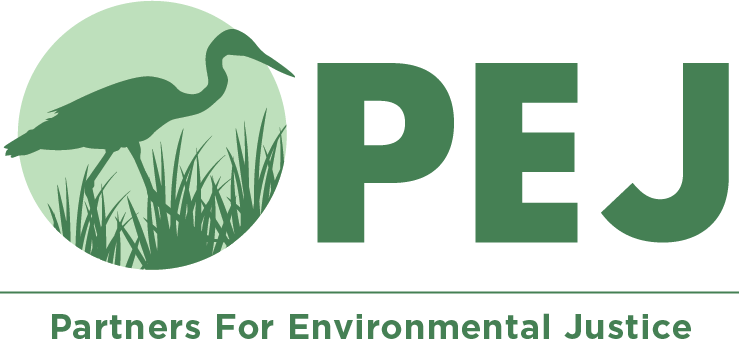Walnut Creek Wetland Park
“ If you have a very attractive recreational amenity, it can’t do anything but help increase the economic value of the area. Property values go up, it’s a destination for the region, and it affords this aging community a place to walk and enjoy nature.“
-Dr. Norman Camp
Most of the park’s 58 acres consists of wetlands
History of the Wetlands
In 1954, Hurricane Hazel devastated North Carolina as it tore up the East coast with wind gusts at 100 m.p.h. In Raleigh, an average of two or three trees fell per block. Many fell on cars, homes and other structures, and power lines were left tangled and broken. The Walnut Creek Wetland acted like a huge sponge for this excessive water, soaking it up and releasing it slowly back down the creek. Perhaps, this is why the wetland was used as an unofficial sewage treatment plant before the Clean Water Act (1972). A community resident remembers: “I used to walk the two miles to Walnut Creek as a kid. I loved to explore the area. As kids, we thought it was exciting and humorous to see and smell the raw sewage that was dumped into the stream.”
Wetlands have the potential to improve both the ecological and spiritual health of any community. Ecologically, the unique physical and biological characteristics of freshwater wetlands, such as those found in Walnut Creek, provide habitat for a large percentage of the nation’s flora and fauna. These natural communities perform numerous important environmental and hydrologic functions. Walnut Creek absorbs sediment and nutrient flows, storm water runoff and floodwaters from the upstream towns of Cary and Raleigh. Combined with aesthetic value of majestic cypress and perched great blue herons, the educational and ecological value of this area is indisputable. Spiritually, the opportunity to experience an ecologically functional wetland instills an appreciation for the environment through fostering self worth and individual responsibility within the community.
Despite the history of valuable ecological function and unofficial sewage treatment, past city planners thought that the wetland would make a good place to build Raleigh’s first African American community, Rochester Heights. Rochester Heights was built in a low-lying area immediately adjacent to the wetlands . Because of this, the area has been subject to frequent and demoralizing flooding of the homes in nearby neighborhoods over the years. The Walnut Creek wetlands have also been used as a dumping ground for trash including discarded household appliances. This pollution clogs the waterways and covers the natural forests. Additionally invasive species have been encroaching on the wetlands, choking out native plants and animals. Over the past two decades, PEJ has worked with the local community, the City of Raleigh, and other partners to address the critical concerns. Learn more about how you can get involved.
Photo Credit: Justin Kase Conder
The Walnut Creek Wetland Park
The Walnut Creek Wetland Park consists of the Dr. Norman and Betty Camp Education Center and 58 acres of surrounding wetlands and trails. The education center houses many amenities for visitors including recreational facilities, an observation deck, and meeting facilities.
Together with the local community, PEJ has advocated to expand and improve the wetland park. Park improvements are part of a current master plan that was adopted by the Raleigh City Council in January 2018.
Learn more about the education center and planned improvements at the City of Raleigh’s Walnut Creek Wetland Park site.
Amin Davis leads an education tour
Partners
Over the years, PEJ has worked with many partners to improve the health of the wetlands and surrounding community including St. Ambrose Episcopal Church, the City of Raleigh, the Natural Learning Initiative at NCSU, the Triangle Greenways Council, and many local schools and organizations. PEJ is currently working with the Walnut Creek Wetland Community Partnership coordinated by the NC Water Resources Research Institute (WRRI) and the NCSU College of Natural Resources to improve watershed education, research, and management.
Parks with Purpose
In spring 2019, PEJ received funding in partnership with WRRI to strengthen support for the wetland park through a Parks with Purpose grant from the Conservation Fund.
The Conservation Fund Parks with Purpose program focuses on some of our most vulnerable urban communities. Through equitable park development projects and a community-centered approach, we work with residents to transform and restore blighted, inner city properties into vibrant new parks. Not only do these new greenspaces provide safe places for kids to play and neighbors to gather, but they also reduce stormwater flooding impacts, train and employ local residents, provide access to fresh, healthy foods, and create natural habitat in these highly urbanized neighborhoods.
Learn more about this program in cities >
The Conservation Fund Parks with Purpose Raleigh
The Walnut Creek Wetland Community Partnership (WCWCP) provides a communication hub for residents, community stakeholders, academic and government leaders to collaborate on sustainable management of the wetlands and development of opportunities that benefit those who live, work, and play in the Walnut Creek community and watershed.
The Walnut Creek Community Partnership with Water Resources Research Institute of the UNC System
Partners communicate through an email listserv and periodic gatherings in the community. WRRI and NCSU College of Natural Resources are coordinating the partnership.






